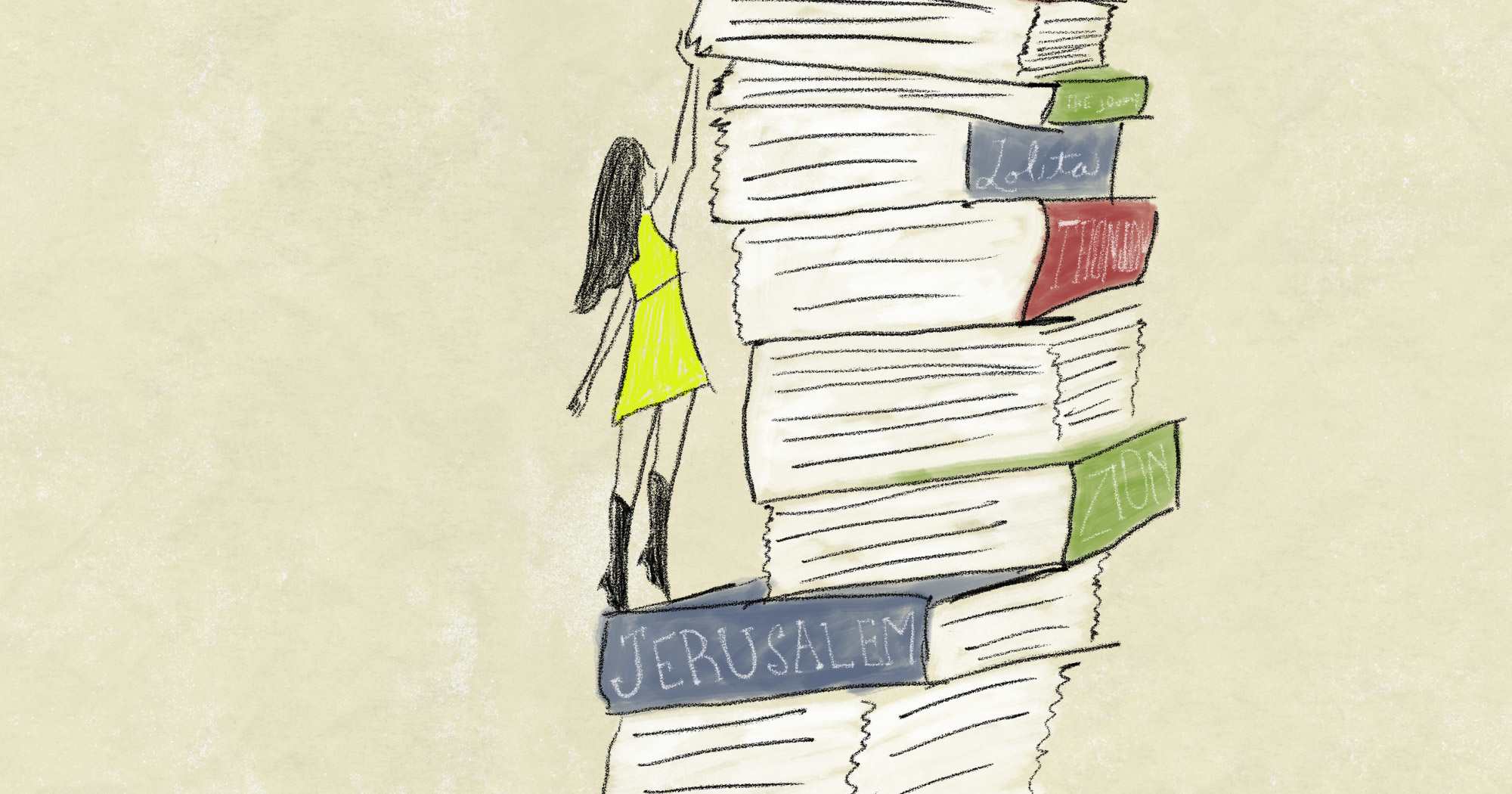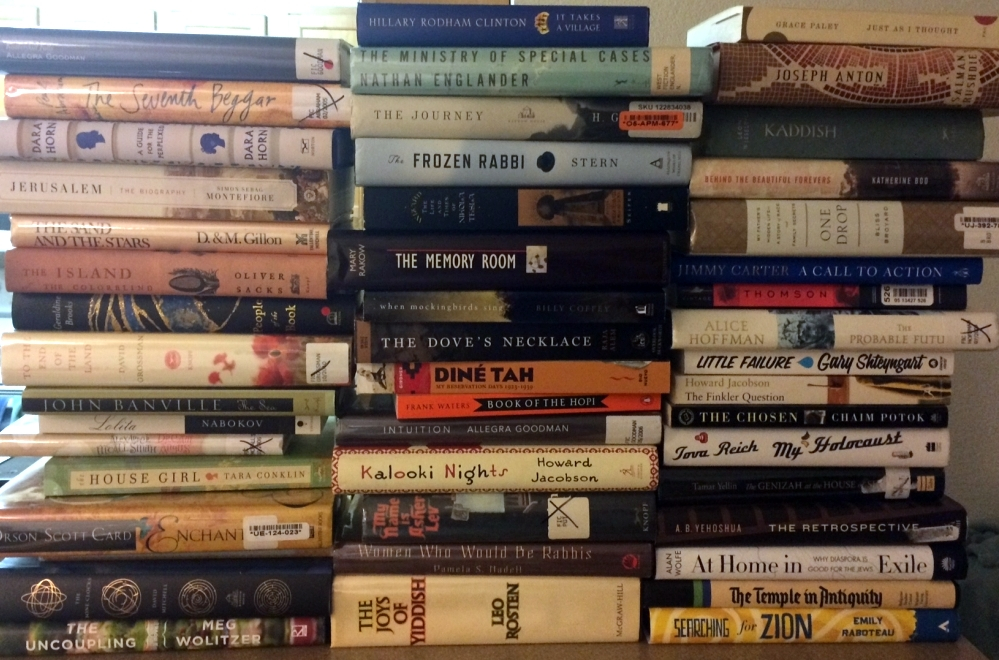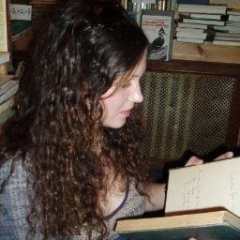Reading Resolutions: #ReadMyOwnDamnBooks

While looking for something to read on New Year’s Eve—at home, with Amazon turned off and my library not open—I was reminded that I have only a passing familiarity with a considerable portion of the books that I own. My shelves hold volumes I love, but also titles that I bought with the best of intentions, and that I haven’t opened since.
Carl Sagan’s Contact has been on my reading list for years, and in my collection for at least one. My options limited to the books on hand, it became my first read of 2016. And it’s beautiful. And I have no good excuse for having not read it sooner.
What makes bookish people insist on options beyond those within arm’s reach? I know I’m not alone; I finish a book, and I want something new, and am captivated the sheen of a fresh title that I haven’t considered before. David Mitchell gets pushed aside again (not in the mood); the culturally specific books I buy to learn more about my history are little considered (not now!); the think, dense literary tomes hold no appeal.

Andi Miller
Book Blogger Andi Miller knows the feeling—and, at the beginning of the new year, she elected to do something other than just give in to the desire for new books. She began a challenge, furnished with a catchy hashtag and all, for herself and for others: rather than accumulating more titles, why not just read the books that we already own?
#ReadMyOwnDamnBooks isn’t a challenge with unreasonable restrictions—we all know how unappealing absolutes are when it comes time to stick. Miller herself left room for a little free play: she’d like to get through 100 of the books in her extant TBR pile, but will allow herself new books at periodic junctures. This interplay, between books we’ve been meaning to read and those we can’t resist, seems crucial for those with ample bookish appetites.
“I see every book as an adventure yet to be had,” Miller told us, “and I can hardly resist when a great premise or an author I love offers me a new possibility.” She likens this problem to a kind of literary gluttony, common amongst those who love books. To-be-read piles have their own kind of promise–having already “survived cullings,” they maintain allure for the reasons we first acquired them.
But an unread book can also be an overwhelming prospect when you’re just looking for a story to escape into. Sidelined titles are sometimes sidelined for a reason. #ReadMyOwnDamnBooks is the brainchild of a reader herself attracted to “heavy or confronting novels” for their emotional rewards–but those same novels could bite back, if read back to back. I face the same challenge: my titles are histories, book-of-the-year nominees, fluffless beasts which will make me think, though they might not leave much room for laughter. Or light.
Asked about the particular challenges in her stack, Miller names titles that excite her—but which might be emotionally perilous. A person who, at buying time, picks up books like “Ruby by Cynthia Bond, The Enchanted by Rene Denfeld, and An Untamed State by Roxane Gay” isn’t afraid of the internal challenge, but says “I fear I’m going to read myself right into depression if I stick too closely to my TBR!”

These are Michelle Anne Schingler's own damn books.
So what are the advantages of vowing to spend a good portion of 2016 reading our own damn books? There are some obvious answers: these are the titles we always meant to read, and if we make ourselves, we could find new literary loves. Miller points to titles that seemed exciting once, but which now languish on shelves; her challenge is Ruth Reichl’s Delicious!, a deviation from the chef’s usual nonfiction fare. Paul Theroux’s novels have been immovable on my shelves for years for the same reason–what if they’re not enough like his non-fiction? What if I like Theroux less after? There could very well be something there; along the way, though, it’s easy to lose faith in the challenge.
At the very least, addressing TBR stacks might be seen as an advance tactic for future weeding sessions. My own stack is replete with titles I’ve refused to get rid of, across years and after several moves—but which I cannot textually defend my loyalty to. I believe there’s something there. And if there isn’t? I can, as Miller plans to do with any books that don’t actually work in her collection, “cycle them out.”
We readers love our books. There’s something satisfying about a full shelf, a ladder of spines pressed against the wall, a semi-topple on the coffee table. Books are possibilities. Books are promises, or, in Andi’s words, are “an adventure waiting to happen.” Not every adventure ends up living up to that promise, though, and there’s something on the sadder end of satisfying to letting go of titles we left on our shelves too long.
I’m doing my best to stick to Andi’s model this year–I’ll #ReadMyOwnDamnBooks as much as time, and my will power, allows.
What adventures await you, were you to do the same?

Michelle Anne Schingler is associate editor at Foreword Reviews. You can follow her on Twitter @mschingler or e-mail her at mschingler@forewordreviews.com.
Michelle Anne Schingler
